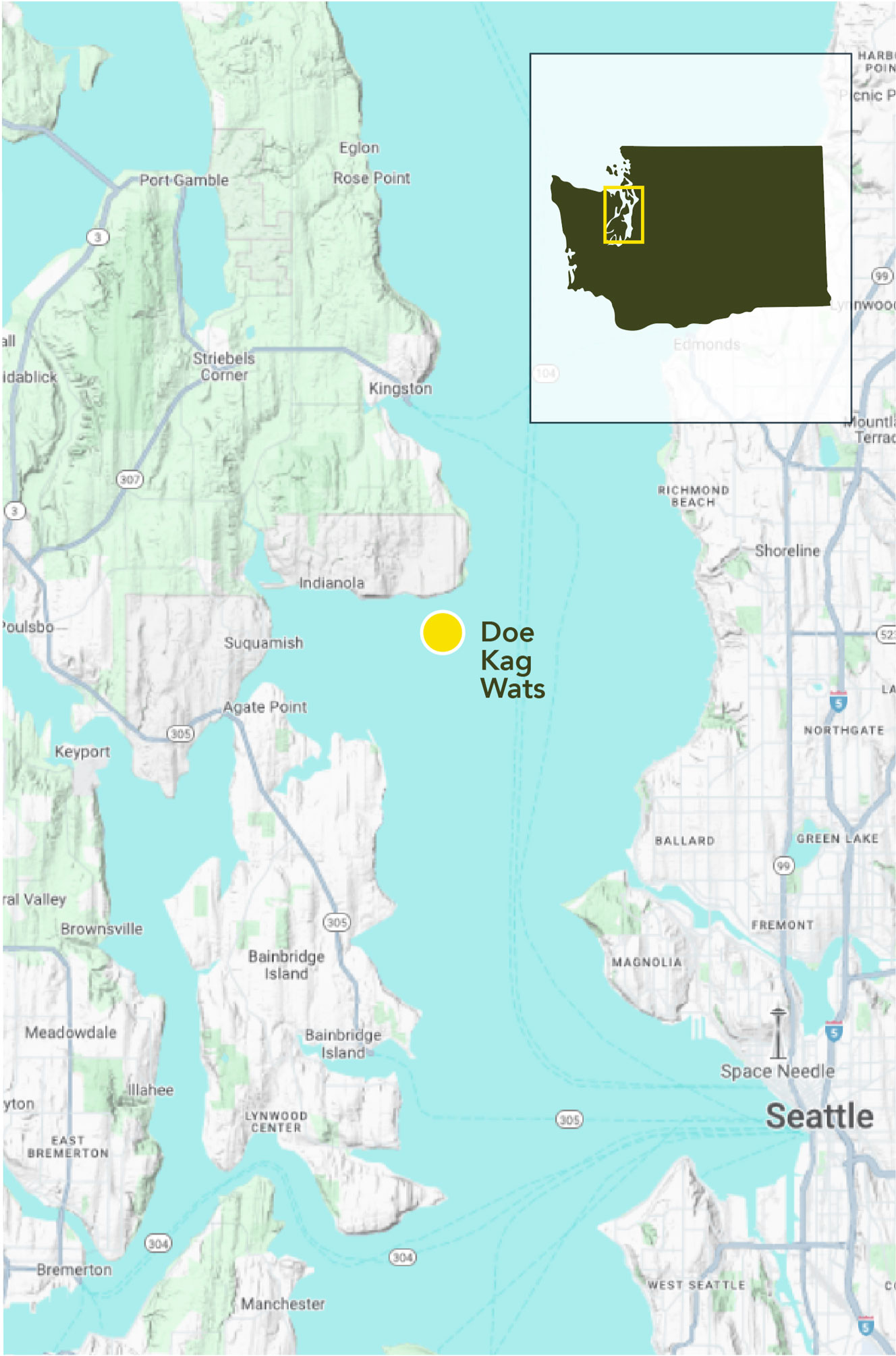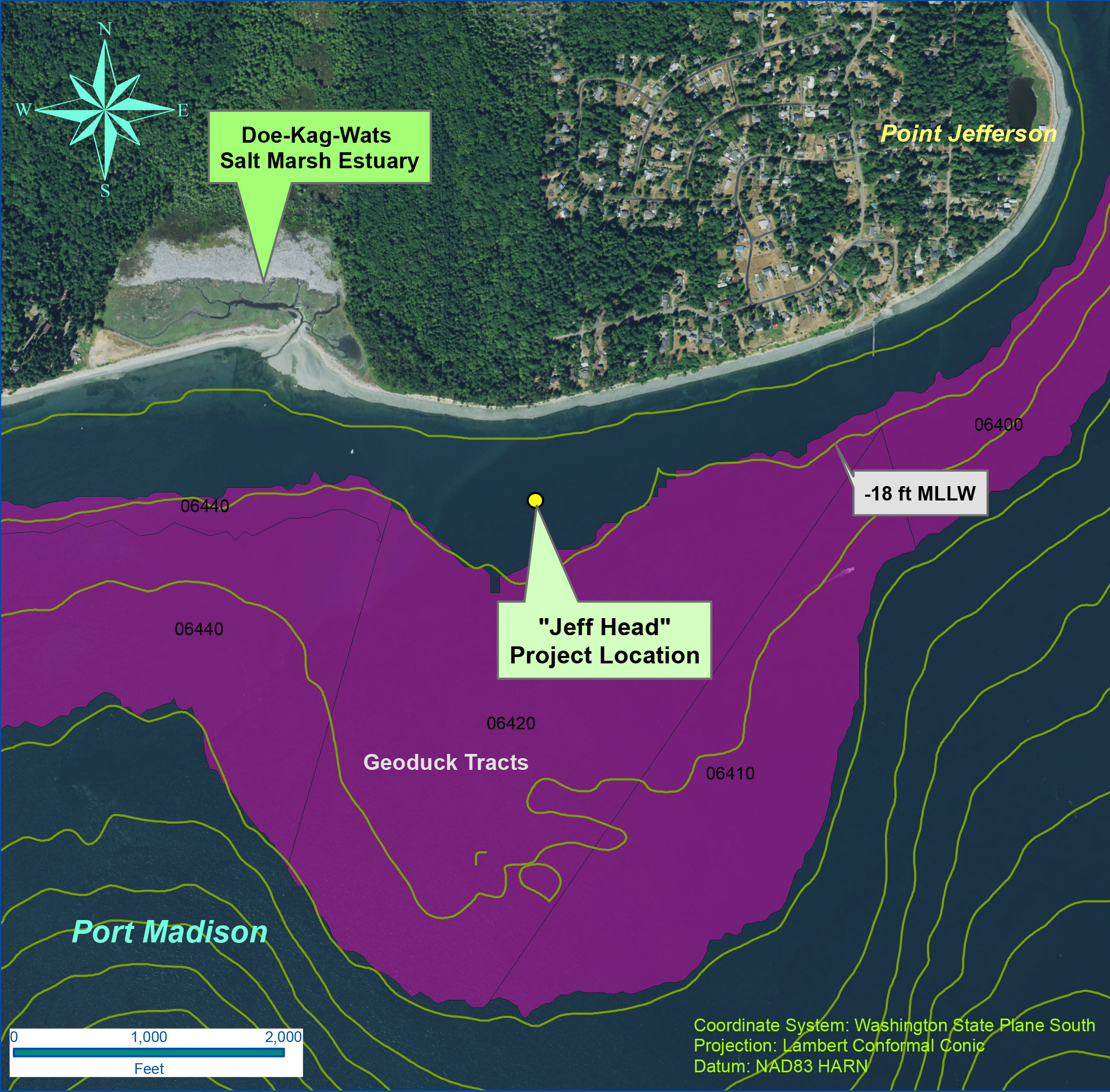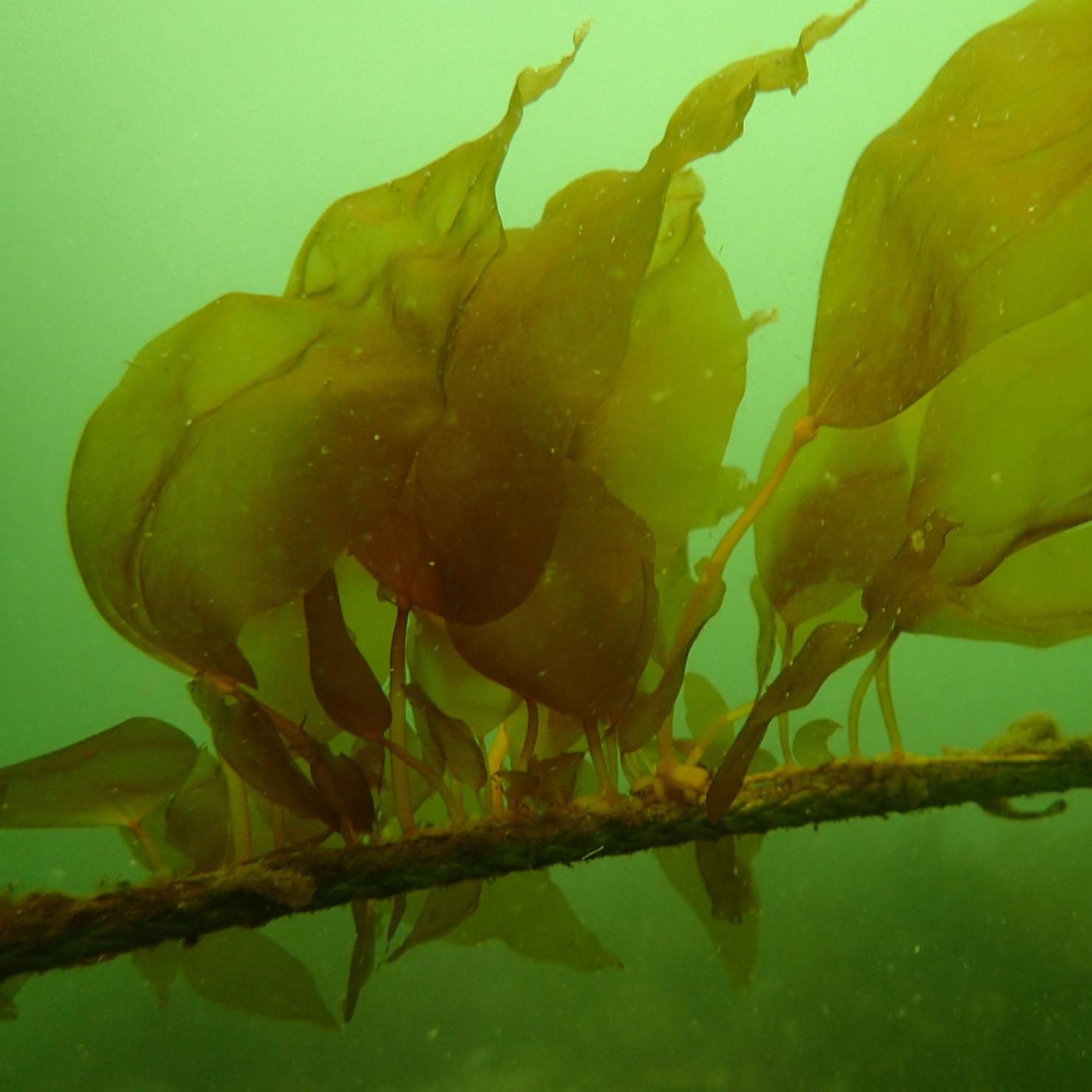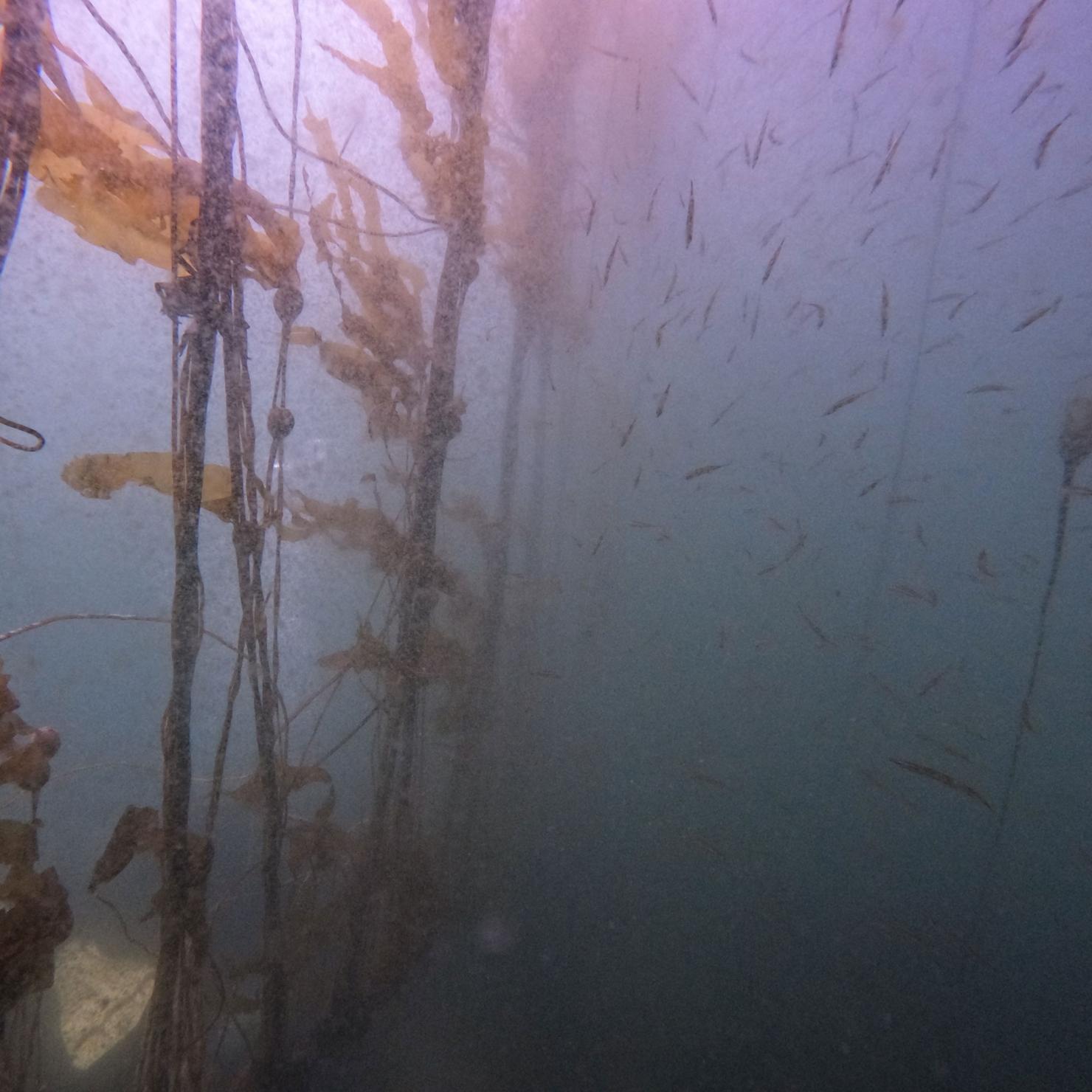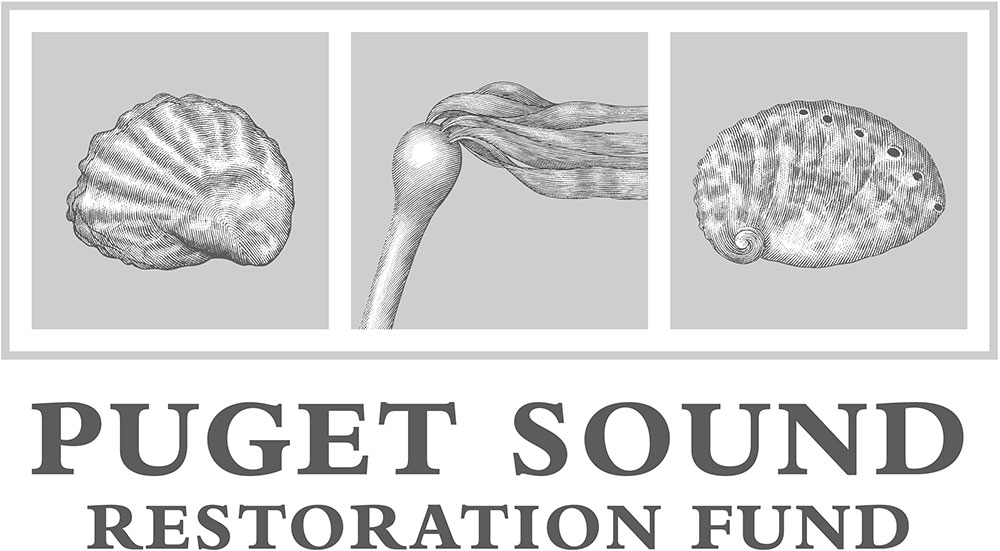In 2024, PSRF divers documented naturally growing bull kelp at Doe Kag Wats within the kelp enhancement area. Divers counted 33 bull kelps naturally settled within the enhancement area in May 2024, near or alongside the cultivation lines. While this level of natural recruitment does not yet generate a self-sustaining site, it is a step in the right direction. The Tribe understands enhancements are not a quick win, or a guaranteed win. Regardless, they want to support ongoing kelp restoration actions.
Alongside bull kelp restoration efforts, the Tribe is also working to address stressors that have potentially contributed to kelp forest losses. These are dual, interconnected strategies. Specifically, the Tribe is working to address pollution threats from multiple sources that impair seawater conditions.
Key Findings
- Building a successful restoration project starts with co-developing goals to meet the needs of the community you are serving.
- Restoration actions must be tailored to specific sites and place-based knowledge is critical.
- Repeated, successful growth of a kelp bed at Doe Kag Wats is evidence that environmental conditions at this site can still support bull kelp. A continued input of kelp seed is needed at this site, suggesting that conditions that lead to a lack of microscopic forms or to interruptions to reproduction and development might be contributing to kelp decline.
- Stressful temperatures at Doe Kag Wats have been recorded which may be a cause of variability in kelp success. This suggests the need for restoration strategies that are resilient to climate change.
- In adapting aquaculture methods for use in restoration, careful lab practice, site-specific timing within the year, density of seed outplant, and outplant substrate are key components to consider.
- Scaling up is logistically challenging, therefore evidence of return on investment (bigger outplant yielding more next-generation kelps) is an important validation of efforts.
- Differences in seasonality of growth, reproduction, and natural death between the outplant site and wild sites might provide clues to improving restoration technique.




